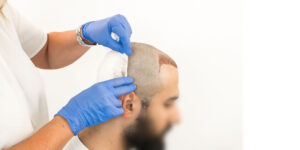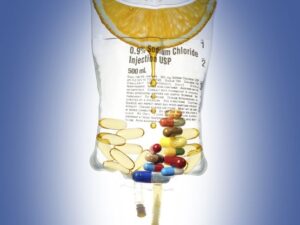A well-defined chest is a major fitness goal for many men, but achieving it isn’t always as straightforward as lifting weights and dieting. Two common concerns that stand in the way of chest sculpting are gynecomastia and chest fat. While they may appear similar, they are fundamentally different conditions, and understanding this difference is crucial for developing the right strategy. Many men struggle with identifying whether their chest fullness is due to fat accumulation or glandular enlargement. In either case, the path to a sculpted chest varies dramatically. If misdiagnosed or misunderstood, even the most rigorous fitness regimes can fail to yield visible results. In this guide, we’ll break down the key differences, symptoms, and treatment options for each condition, helping men take a more effective, informed path to their aesthetic goals. For those who discover they’re dealing with hormonal imbalances, gynaecomastia treatment becomes a critical option to consider.
Understanding Chest Fat: The Role of Body Composition
Chest fat is the result of excess adipose tissue accumulating around the pectoral region. This is often seen in individuals with higher body fat percentages. In men, fat distribution patterns can vary, but the chest area is a common site, especially when overall body fat levels increase. The appearance of “man boobs” or soft chest contour is usually tied to lifestyle factors such as poor diet, lack of exercise, and stress.
Chest fat is typically soft to the touch and moves freely when compressed. It does not feel dense or firm beneath the skin, and it often reduces with overall fat loss. Cardiovascular exercise, strength training, and a caloric deficit are usually effective in reducing chest fat. However, progress might be slow depending on genetics and age. Men who reduce their body fat below 15% generally start seeing significant chest definition improvements, assuming muscle development is also in place.
Gynecomastia: A Hormonal Condition
Unlike chest fat, gynecomastia is a medical condition involving the enlargement of male breast tissue due to a hormonal imbalance, specifically an increase in estrogen or a decrease in testosterone. It is most common during puberty, but can also occur in adulthood due to medications, anabolic steroid use, aging, or underlying health conditions like liver disease or thyroid disorders.
Gynecomastia is characterized by a firm, rubbery mass beneath the nipple, which can sometimes be painful or sensitive. Unlike chest fat, it does not respond to diet and exercise alone. Even men with very low body fat can exhibit signs of gynecomastia, which often causes frustration when traditional fat-loss methods fail to flatten the chest.
This condition can occur in one or both breasts, leading to asymmetry and visible puffiness in the nipple area. While it is not dangerous in most cases, it can lead to psychological stress, social anxiety, and low self-esteem due to its impact on physical appearance.
How to Tell the Difference Between Gynecomastia and Chest Fat
Differentiating between gynecomastia and chest fat can be tricky without a clinical assessment, but there are a few signs that can help. Start by feeling the chest tissue. If there is a noticeable firm lump under the nipple or a disc-like shape that feels rubbery and distinct from the surrounding fat, it is likely gynecomastia. On the other hand, if the tissue is soft, thick, and lacks a central mass, it’s more likely just fat.
Another way to test is by observing changes with weight loss. If a comprehensive fitness and nutrition plan leads to fat loss elsewhere in the body but your chest remains disproportionately full, that’s a red flag for gynecomastia. Photos taken over time and comparing body proportions can also offer insight into whether fat is being lost uniformly or not.
Medical professionals might recommend imaging tests like ultrasounds or mammograms to distinguish between fat and glandular tissue. Blood work may also be done to check for hormonal imbalances.
Treatment Options and Solutions
If your chest fullness is caused by fat alone, the solution is primarily lifestyle-based. A combination of strength training, particularly targeting the pectoral muscles, and full-body fat-burning exercises can help sculpt the chest. Bench presses, incline presses, push-ups, and chest flys are especially effective. Pairing this with a high-protein, low-sugar diet amplifies results.
However, when gynecomastia is the underlying issue, more targeted approaches are needed. If caused by medication or steroids, discontinuing the substance often helps. In hormone-related cases, doctors may prescribe medication to restore balance. For persistent gynecomastia, surgical intervention—such as male breast reduction via liposuction or gland excision—is the most effective option. These procedures are safe, widely available, and offer long-lasting results when paired with healthy lifestyle habits post-surgery.
Importantly, one should not attempt to self-treat gynecomastia through unverified supplements or risky drug use. Consulting with a certified endocrinologist or plastic surgeon is the most reliable way to get a proper diagnosis and develop a treatment plan.
Psychological Impact and Confidence Recovery
Regardless of whether the issue is chest fat or gynecomastia, the psychological burden is often substantial. Many men avoid swimming, taking their shirts off in public, or wearing fitted clothes. This body-consciousness can lead to depression, anxiety, and reduced social engagement. That’s why early identification and action are crucial—not just for physical transformation but for mental well-being.
Working with professionals—whether it’s a personal trainer, nutritionist, or healthcare provider—can provide not just guidance but also emotional support throughout the transformation journey. Forums, online groups, and therapy can also help normalize the conversation and reduce the shame around the issue.
Final Thoughts: Taking the Right Path Toward Chest Sculpting
Chest sculpting is more than a fitness goal—it’s about reclaiming confidence, health, and self-image. Understanding whether you’re dealing with gynecomastia or chest fat is the first and most vital step. While they may look similar in the mirror, they require vastly different approaches for resolution.
Rather than guess and waste time on ineffective methods, men should take a proactive role in learning about their bodies. Simple diagnostic steps, combined with professional advice, can fast-track the journey to a firm, masculine chest. In either case, results don’t happen overnight, but with the right approach, they do happen—and they’re worth the effort.






